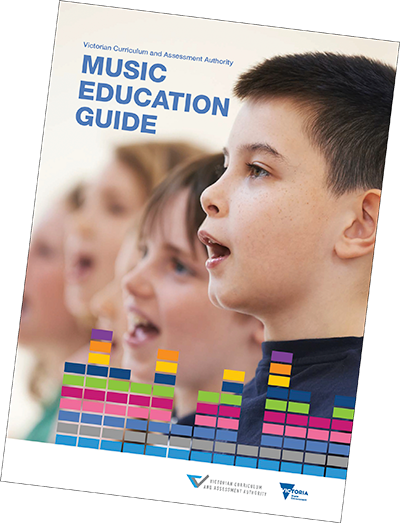September lead stories
It's time to get VET
Each year more than 50,000 secondary students across Victoria incorporate vocational education and training (VET) into their VCE or VCAL — starting out on flexible pathways towards a diverse range of education and career goals.
Get VET is an exciting new resource from the VCAA that will support teachers in helping students to get the most out of their VCE or VCAL by allowing students to explore the wide-range of opportunities and advantages that VET offers.
Get VET is now available
online, and in coming weeks schools will receive the colourful 40-page
Get VET booklet, filled with bite-size pieces of information, infographics, illustrations and photos that will engage, inform and inspire students and their parents and guardians.
Get VET busts the myths about VET graduate outcomes, showing how the highest-earning VET graduates can earn more than the highest-earning university graduates, how more than half of all new jobs predicted by 2022 will be achievable with a VET qualification, and how VET can contribute to a student's ATAR and university entrance.
Students will learn that in addition to gaining a nationally recognised qualification and contribution toward their VCE or VCAL, VET can offer unique opportunities to improve their skills, knowledge, employment opportunities, financial outcomes and education pathway.
Technology and globalisation are transforming the labour market and
Get VET shows students how VET is responding to changing employment demands and setting up students for careers in the fastest-growing industries.
Students are guided through how the hands-on approach of VET and its connection to the workplace differs from other forms of learning. The resources also help students understand how VET works, including VCAA-approved VET programs, structured workplace learning and school-based apprenticeships and traineeships.
Get VET contains a collection of success stories from VET students working and training in a wide range of industries throughout Victoria. Each success story highlights the powerful outcomes of incorporating VET in the VCE or VCAL.
We invite you to share these resources with students, parents and guardians and fellow teachers, to support informed decision-making when designing student learning programs.
Back to Top
Music Education Guide released
'I would teach children music, physics and philosophy; but most importantly music, for in the patterns of music and all the arts are the keys of learning.' – Plato
The Victorian Curriculum and Assessment Authority's publication, the
Music Education Guide, has been masterfully orchestrated to support educators to develop, or finely tune, a school's music learning program.
The benefits of students enjoying, learning about and creating music have been long recognised as a crucial part of any thriving school program. Decades of research has repeatedly found that there are multiple benefits to music education. The research shows that the skills of composing and understanding music facilitate learning in other areas of the curriculum such as mathematics, science, poetry, art and history.
The
Music Education Guide provides:
- examples of high-quality music learning programs
- information to assist program development planning phases
- content about music, including video and audio support materials
- useful links and resources
- music education methodologies and approaches to learning
- approaches for effective collaboration.
The Guide includes the following sections:
Planning your music learning program: this section provides detailed information on how to create a vision and plan for a sequential, developmental learning program and ways in which to collaborate effectively.
Music in context: this section links music to project-based learning and describes ways in which schools can create performance opportunities for their students, through both instrumental and ensemble music. Balwyn High School demonstrates how a music program can be elevated to gain worldwide recognition; particularly when one of their students achieves an award in the International Vocal Jazz Competitions in New York.

Understanding music: this section details how the structure, form and composition of music are central to its understanding. It outlines how continued learning and engagement in music can accelerate learning outcomes. Through the exploration of music genres, compositions, styles and sources such as television and film, it can provide increasing complexity of music knowledge attainment and understanding. Understanding of musical history and its founding in various cultures and associated significance can give deeper context to music, its place in society and its value in the present day.
Approaches to learning: this section offers ideas for educators to support students to further explore and become more deeply immersed in music. Guiding teachers to explore various approaches to learning, to help students in the acquisition of increasingly complex skills and knowledge, will serve to improve a school's music education overall.
The
Music Education Guide will provide schools with the incentive and confidence to support educators to better deliver, plan and implement a school's music learning program.
The Guide is available from the
VCAA website.
Back to Top